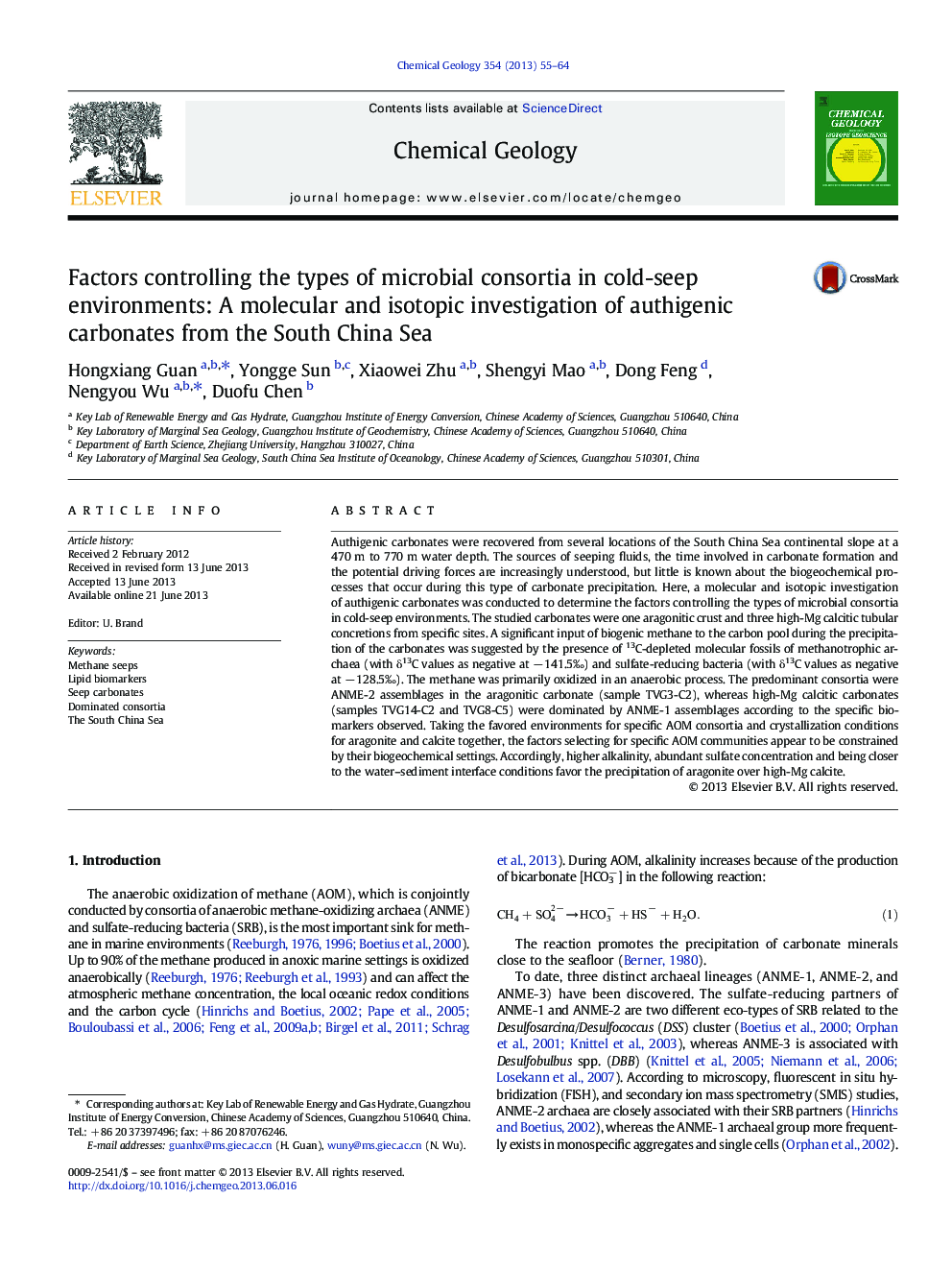| کد مقاله | کد نشریه | سال انتشار | مقاله انگلیسی | نسخه تمام متن |
|---|---|---|---|---|
| 6436833 | 1637615 | 2013 | 10 صفحه PDF | دانلود رایگان |
- 13C-depleted molecular fossils of methanotrophic archaea and sulfate-reducing bacteria were found.
- AOM with distinctive lipid biomarkers that point to different archaeal assemblages.
- Varying microbial consortia confirmed in samples appear to be caused by respective biogeochemical settings.
Authigenic carbonates were recovered from several locations of the South China Sea continental slope at a 470 m to 770 m water depth. The sources of seeping fluids, the time involved in carbonate formation and the potential driving forces are increasingly understood, but little is known about the biogeochemical processes that occur during this type of carbonate precipitation. Here, a molecular and isotopic investigation of authigenic carbonates was conducted to determine the factors controlling the types of microbial consortia in cold-seep environments. The studied carbonates were one aragonitic crust and three high-Mg calcitic tubular concretions from specific sites. A significant input of biogenic methane to the carbon pool during the precipitation of the carbonates was suggested by the presence of 13C-depleted molecular fossils of methanotrophic archaea (with δ13C values as negative at â 141.5â°) and sulfate-reducing bacteria (with δ13C values as negative at â 128.5â°). The methane was primarily oxidized in an anaerobic process. The predominant consortia were ANME-2 assemblages in the aragonitic carbonate (sample TVG3-C2), whereas high-Mg calcitic carbonates (samples TVG14-C2 and TVG8-C5) were dominated by ANME-1 assemblages according to the specific biomarkers observed. Taking the favored environments for specific AOM consortia and crystallization conditions for aragonite and calcite together, the factors selecting for specific AOM communities appear to be constrained by their biogeochemical settings. Accordingly, higher alkalinity, abundant sulfate concentration and being closer to the water-sediment interface conditions favor the precipitation of aragonite over high-Mg calcite.
Journal: Chemical Geology - Volume 354, 16 September 2013, Pages 55-64
